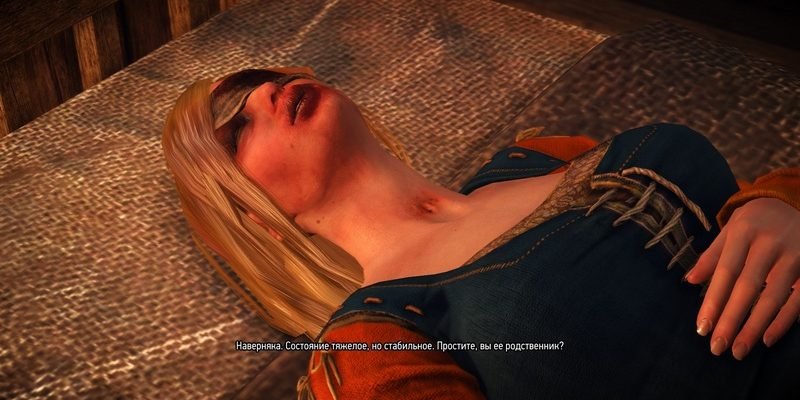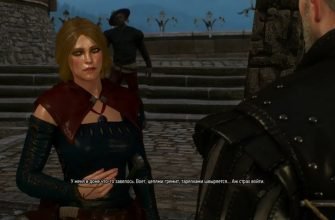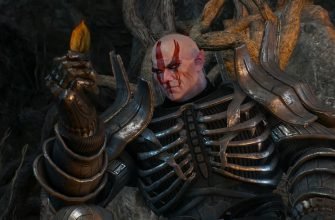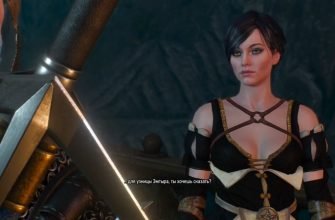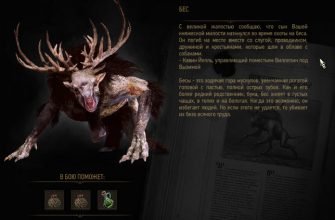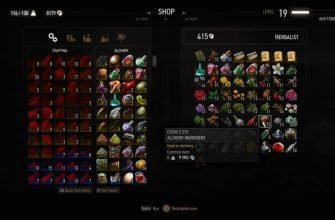The Witcher 3: Wild Hunt features the captivating quest “Carnal Sins,” which draws players into a grim and complex investigation in the city of Novigrad. This quest unveils a mysterious series of brutal attacks targeting individuals across the city, culminating in the harrowing assault on Priscilla, a character dear to Dandelion, one of Geralt’s close allies. To uncover the identity of the assailant and understand the motive behind these heinous crimes, Geralt must navigate through a tangled web of clues, suspect interactions, and misdirections that eventually reveal the dark truth.
The Initial Attack on Priscilla
Priscilla, a celebrated bard and a cherished friend of Dandelion, is viciously attacked, sparking the onset of the “Carnal Sins” quest. The attack occurs at a time of celebration, overshadowing the opening of Dandelion’s establishment. The urgency of the situation compels Geralt to partner with Dandelion and investigate the attack, starting with a visit to Vilmerius Hospital where Priscilla battles for her life.
Upon arrival at Vilmerius Hospital, Geralt and Dandelion are greeted by Joachim von Gratz, the head doctor. Joachim reveals that Priscilla, though in critical condition, can survive her ordeal albeit with potential damage to her singing voice. Intriguingly, Joachim mentions that Priscilla’s attack is not an isolated incident — similar attacks have claimed the lives of other victims. This realization adds a layer of urgency to solving the mystery to prevent further bloodshed.
Exploring the Morgue and the Sewers
With Joachim von Gratz’s encouragement, Geralt’s investigation leads him into the Novigrad sewers to access the morgue. Battling drowned creatures and their ilk, he reaches the morgue where he examines the body of a dwarven woodcarver, another victim of the attacks. Geralt discovers significant signs of brutality on the corpse that align with Priscilla’s attack, cementing the suspicion of a serial attacker at large.
During this analysis, Geralt encounters Hubert Rejk, the coroner whose demeanor conceals layers of complexity and history shared with Joachim. Nathaniel Pastodi, a character linked to the Eternal Fire, further complicates interactions by insisting on Geralt’s departure, though not before Hubert subtly promises updates on any new findings. A tension is evident throughout these dialogues, hinting at underlying animosities and the potential for deeper connections between characters involved in the investigation.
Tracing the Attacker’s Path
The investigation divides into three exploratory paths. Geralt must piece together the crimes’ sequence by revisiting the scenes of Priscilla’s attack, the woodcarver’s murder, and obtaining information from Eustace, a corpse collector. This structure offers players some flexibility while maintaining narrative tension through emerging clues that suggest the killer’s malicious intent and aim — notably, the repeated references to potential victims and organized clues left across the crime scenes.
- Priscilla’s Attack Site: Here, Geralt learns from Whistling Wendy, a local prostitute, about suspicious activities and tussles with a band of hostile peasants. His witcher senses uncover a scene that strongly indicates the assailant’s superhuman abilities.
- Woodcarver’s Murder Site: Geralt discerns similar evidence and witnesses blood patterns pointing towards ritualistic elements, cryptically alluding to the murderer’s identity and methods.
- Confrontation with Eustace: The pungently candid corpse collector yields information through persuasion or Axii, releasing a note with Priscilla’s name penned as a presumptive next victim — confirming the calculated nature of these crimes.
The Vegelbud Incident and Revelation
The investigation gains momentum when a messenger rushes Geralt with news of another murder at the Vegelbud Residence. En route, the quest takes a detour towards the overarching theme of class conflicts and religious dogma, as Patricia Vegelbud’s tragic fate speaks to broader sociopolitical tensions within Novigrad. As Geralt pieces through the Vegelbuds’ guarded residence, he identifies another central character, Ingrid Vegelbud, and uncovers familial rifts caused by religious ideologies.
Upon scrutinizing Patricia’s remains, a note reveals the next target: Sweet Nettie at Crippled Kate’s brothel. These unraveling events feed into a sense of dread as Geralt comprehends that the true perpetrator seemingly plays with lives based on his warped, methodical agenda, intensifying Geralt’s resolve to preemptively strike against further loss.
The Confrontation at Crippled Kate’s
Geralt arrives at Crippled Kate’s to find Nathaniel Pastodi poised in a sinister tableau, preparing to torture Sweet Nettie. Pastodi, himself untrustworthy and sordid, prompts Geralt to decide his fate. In-depth interaction unravels the fact that Nathaniel is not the serial murderer but an auxiliary antagonist of moral reprehensibility. Consequently, Geralt learns the killer’s true identity — Hubert Rejk, the seemingly affable coroner concealed beneath the guise of human normalcy.
Their confrontation unveils Hubert’s genuine nature: not only a calculating murderer but an old katakan vampire, driven by an esoteric goal of purging perceived impurities under the twisted visage of justice. This twist stands as a commentary on the parallel corruption lying within human institutions depicted through the Eternal Fire.
Final Confrontation and Resolution
The denouement unfolds at the bustling Novigrad docks, where a showdown between Geralt and the transformed Hubert challenges the witcher’s skills. The duel’s high stakes encapsulate a symphony of heightened tension, leading to an arduous victory for Geralt. Upon vanquishing Hubert, Geralt secures evidence that affirms the vampire’s identity, motivations, and the mythos of his immortal malice.
The Witcher, with the mission concluded, returns to Vilmerius Hospital where Priscilla recuperates. Joachim von Gratz confirms her recovery trajectory, including the gradual return of her singing voice. Her convalescence allows for the metaphorical repair of wounds inflicted not just by the killer, but also by a city fractured by its own oppressive belief systems and unyielding conflicts.
In reflecting upon reaching justice with each investigation layer unravelled, “Carnal Sins” elicits reflections on the innate darkness within societal paradigms, showing how fear, prejudice, and vengeance intertwine within human and monster alike. The Witcher, entrenched in these sanguineous carnal sins, ultimately reaffirms the moral ambiguity and haunting beauty that defines “The Witcher 3: Wild Hunt.”

